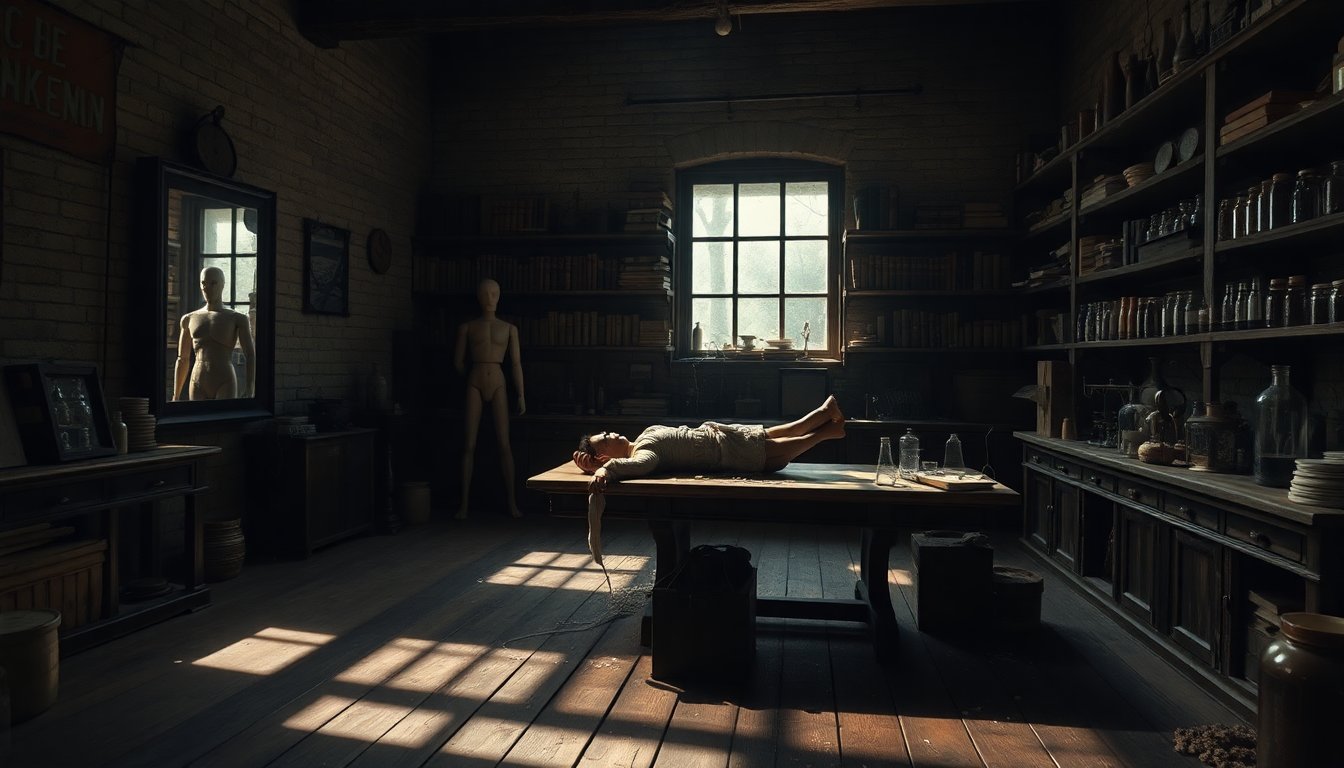Table of Contents
Guillermo del Toro’s latest cinematic endeavor, Frankenstein, reimagines Mary Shelley’s timeless narrative through a lens that emphasizes the emotional and ethical challenges of creation. This adaptation stands out with its stunning visuals and deeply resonant themes, providing audiences with a fresh take on a classic tale.
The film features Oscar Isaac as the ambitious scientist Victor Frankenstein and Jacob Elordi as the creature he brings to life. Del Toro’s vision combines gothic aesthetics with a poignant narrative that explores the complexities of creator and creation.
The plot unfolds in chilling detail
Set against the backdrop of the Arctic, the story begins aboard a ship led by Captain Anderson. As they navigate icy waters, the crew discovers a gravely injured Victor Frankenstein trapped within an iceberg.
They rescue him, but soon find themselves under attack by a terrifying creature that possesses remarkable regenerative abilities. This creature, a result of Victor’s reckless ambition, becomes a harbinger of chaos and despair.
Victor’s tragic backstory
As Victor recuperates, he shares his harrowing past with Captain Anderson.
Raised by an abusive father, Baron Leopold Frankenstein, and a beloved mother, Baroness Claire Frankenstein, Victor’s childhood was marred by loss and favoritism. His mother’s death during childbirth spurred Victor’s obsession with conquering death itself. Driven by grief and ambition, he dedicates his life to unraveling the mysteries of life and death.
Frustrated by the constraints of academia, Victor embarks on a personal journey that leads him to perform a forbidden experiment. With financial backing from arms dealer Henrich Harlander, he assembles a grotesque creation from the remains of the deceased, culminating in a moment of shocking success as he animates the lifeless body.
However, the creature’s awakening only deepens Victor’s horror, as he grapples with the implications of his actions.
Exploring the creature’s humanity
As the narrative progresses, the creature emerges as a tragic figure who longs for understanding and companionship. Initially feared and reviled, the creature seeks solace in nature, where he encounters a blind man who teaches him about language and kindness. This relationship highlights the creature’s innate desire for connection, contrasting sharply with Victor’s rejection.
The bond between creation and creator
Victor’s relationship with the creature deteriorates as he becomes increasingly horrified by what he has wrought. The tension culminates in a tragic confrontation during a wedding, where the creature demands a companion to alleviate his loneliness. Victor’s refusal leads to devastating consequences, as chaos ensues, resulting in tragic losses.
Ultimately, the film questions the morality of creation and the responsibilities that come with it. Del Toro masterfully balances horror with emotional depth, allowing viewers to empathize with both Victor and his creation. The haunting visuals, combined with a poignant score by Alexandre Desplat, elevate the film beyond mere horror, inviting contemplation on themes of isolation and the quest for belonging.
Reception and thematic depth
Upon its premiere at the Venice International Film Festival, Frankenstein received widespread acclaim for its ambitious storytelling and visual splendor. Critics praised Elordi’s portrayal of the creature, noting how he embodied both the horror and the vulnerability of the character. This adaptation does not merely retell a well-known story; it challenges audiences to reflect on the consequences of unchecked ambition and the quest for acceptance.
Del Toro’s approach to the source material is both reverent and innovative, ensuring that Shelley’s original themes resonate within a contemporary context. He emphasizes that the essence of Frankenstein lies not just in horror but in the emotional journey of its characters, making the film a compelling exploration of human nature.
The film features Oscar Isaac as the ambitious scientist Victor Frankenstein and Jacob Elordi as the creature he brings to life. Del Toro’s vision combines gothic aesthetics with a poignant narrative that explores the complexities of creator and creation.0





